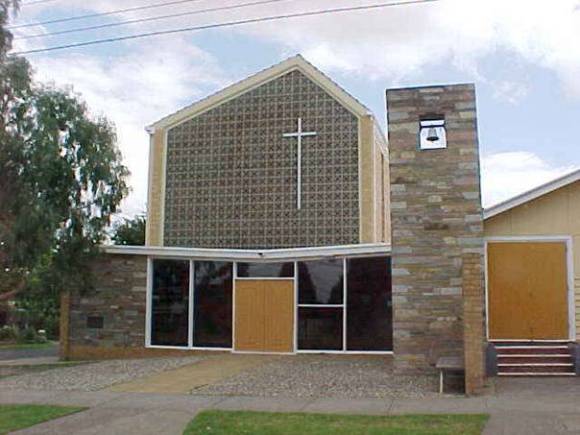| Back to search results » | Back to search page » |
|
ST AIDAN'S ANGLICAN CHURCH COMPLEX
Location18-24 WILLIAMSON AVENUE, and 5 JAMES STREET, STRATHMORE, MOONEE VALLEY CITY
File Number107LevelIncluded in Heritage Overlay |
|
Statement of Significance
What is significant? How is it significant? Why is it significant? Aesthetically, the 1960 church is a fine and notably intact example of a building in the so-called "Featurist" idiom of the late 1950s/early 1960s, characterised by eye-catching geometric form (seen here in the off-centre gabled nave roof and butterfly-roofed foyer) and applied ornament and texture (seen here in the use of Castlemaine slate cladding, projecting brickwork, pebbled paving and concrete block screens). The Featurist approach, codified (and denigrated) by critic Robin Boyd in his 1962 book, The Australian Ugliness, is more commonly manifested in blatantly commercial buildings such as shopping centres, motels, bowling alleys and the like; this church represents its uncharacteristic application in ecclesiastical design. With its variety of colours, forms, materials and textures, St Aidan's stands out as one of the more boldly decorative examples among the relatively few churches around Melbourne that can be classified as Featurist. Architecturally, the church is of interest as the only church ever designed by Philip Garside, a Melbourne architect who worked for a number of important firms in the 1960s (including D G Lumsden, Clive Tyers and Norris & Partners) that specialised in commercial, industrial and institutional design. The adjacent kindergarten building is also of interest as a minor example of the work of important ecclesiastical architects Mockridge, Stahle & Mitchell, best known for bold church designs such as Mother of God Catholic Church, East Ivanhoe (1956)
St Aidan's Anglican Church in Strathmore comprises two distinctive structures: the original church hall (a prefabricated timber ex-army hut erected in 1947) and a new purpose-built brick church that was designed in 1958 and dedicated in 1961. The latter is of conventional plan but unusual external form, incorporating an off-centre gable-roofed nave with butterfly-roofed foyer and squat bell tower, all enlivened by applied ornament (including Castlemaine slate cladding, decorative concrete block screen and projecting brickwork) that is highly evocative of its era.
St Aidan's Anglican Church is of historic, aesthetic and architectural significance to the City of Moonee Valley
Historically, the original 1947 church hall is significant as an intact example of a prefabricated timber-framed army hut from the Second World War era - a building type that is becoming increasingly rare as military sites are redeveloped. It also provides rare surviving evidence of a typical phenomenon of the immediate post-war period, when ex-army structures were dispersed and adapted for civilian use. More broadly, the original church hall is also historically significant for its associations with the expansion of Strathmore's community facilities (cf the nearby primary school of 1944) in the early post war period.
Group
Religion
Category
Church




